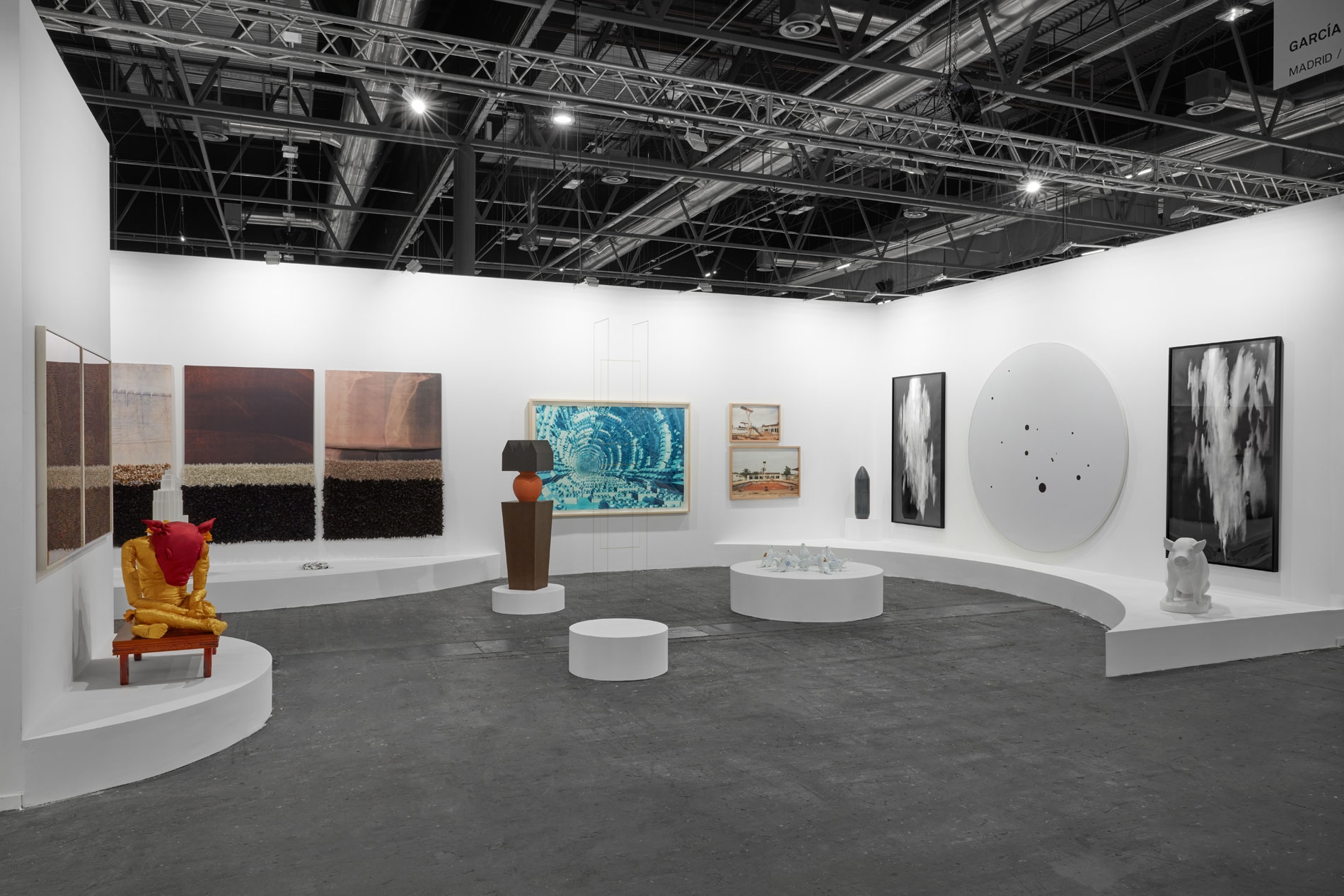
ARCOmadrid 2020
Sabrina Amrani is delighted to announce the gallery’s participation in ARCOmadrid 2020 presenting museum-quality works by Manal AlDowayan, Joël Andrianomearisoa, Gabriela Bettini, Alexandra Karakashian, Waqas Khan, Timothy Hyunsoo Lee, Mónica de Miranda, Jong Oh and Dagoberto Rodríguez at the Galleries sector of the fair.
The presentation at the booth begins with a work from Manal AlDowayan's most iconic series “Suspended Together”, an installation sculpture in porcelain of 10 standing and pecking doves stamped with the travel permit issued by male relatives that allows Saudi women to travel.
The presentation continues with the work “Les Horizons Complexes (de l’Amour et d’une romance)”, a series of colorful textile pieces by Joël Andrianomearisoa. The gallery also showcases the latest works by Gabriela Bettini, “El Proceso”, followed by several works by Babak Golkar from his series “Time Capsules 2016-2116” to "The Elephant (an intermission)". South-African emerging artist Alexandra Karakashian is as well represented by some of her latests art works.
The presentation includes the latest large scale intricate drawing by Pakistani artist Waqas Khan and watercolors by the artist Timothy Hyunsoo Lee consisting of a myriad of cell-like marks that vary in size, color, and saturation. The presentation continues with Mónica de Miranda’s photographs from her series “Panorama”, exploring the the geographical, social and historical study of Luanda. The gallery will also present in ARCOmadrid 2020 a suspended minimal sculpture by Korean artist Jong Oh. The presentation is completed with two signature large-scale watercolor works by established artist Dagoberto Rodríguez (formerly part of the Cuban collective Los Carpinteros).
For any question about our participation in ARCOmadrid 2020, contact us at:
For a full press release and high resolution images click here.

Babak Golkar
Babak Golkar is a Canadian artist, working and living in Vancouver, Canada. Born in Berkeley, US, 1977.
He spent most of his formative years in Tehran until 1996 when he moved to Canada. He obtained a Masters of Fine Arts from the University of British Columbia in 2006 and has exhibited in venues internationally since graduating. Selected solo exhibitions and presentations include All The Blind Men. Servais Family Collection, Brussels, Belgium (2019), The Exchange Project (La Collection Imaginaire), INCA, Seattle, U.S.A. (2016); Of Labour, Of Dirt, Sazmanab, Tehran, Iran (2014); Time To Let Go…, Vancouver Art Gallery: Offsite, Vancouver, Canada (2014); Dialectic of Failure, West Vancouver Museum, West Vancouver, Canada (2013); Parergon, Sharjah Contemporary Art Museum, Sharjah, U.A.E. (2012) and Mechanisms of Distortion, Victoria and Albert Museum, London, U.K. (2012).
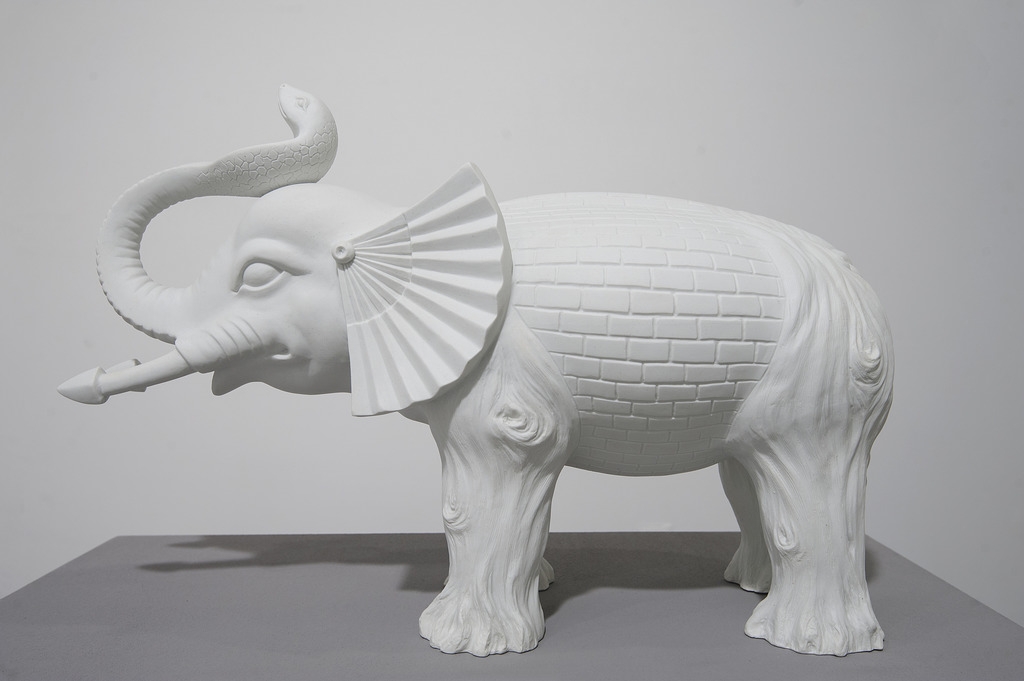
Babak Golkar
The Elephant (in the dark), 2019
Porcelain
21 3/10 × 14 3/5 × 7 9/10 in.
54 × 37 × 20 cm.
Edition 1/10
Inquire about this workFor the project "Time Capsules 2016-2116" I bracketed roughly 200 years in researching materials and their processes; experiences and conditions from the last hundred years and how they have or will continue to affect us
Babak Golkar.

Babak Golkar
L’Origine du Monde, 2016-2116
Primed hydrostone and concealed object.
23 3/5 × 13 4/5 × 41 7/10 in.
60 × 35 × 106 cm.
Inquire about this work
Babak Golkar
Neo-futurism, 2016-2116
ABS and concealed object
29 9/10 × 8 3/10 × 8 3/10 in.
76 × 21 × 21 cm.
Inquire about this work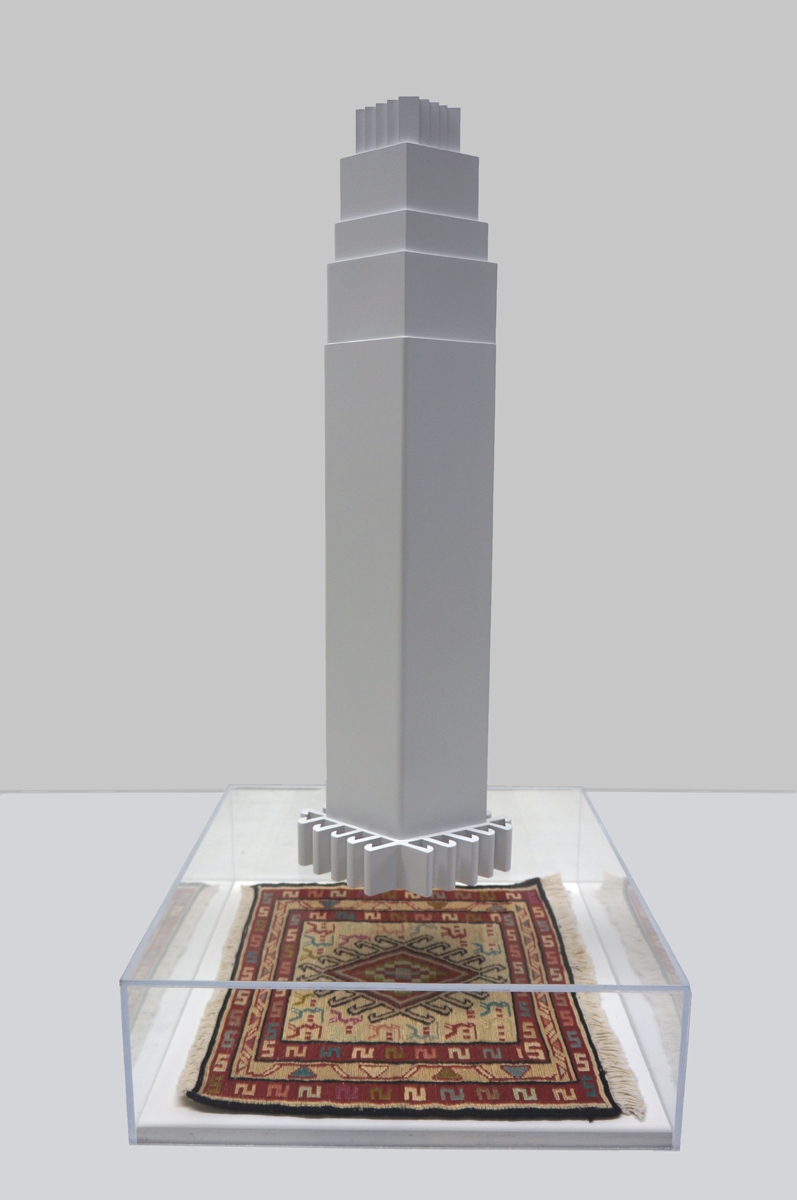
Babak Golkar
Negotiating the Space for Possible Coexistences No. 8, 2016
Persian carpet, plexiglass, wood and laquered paint
22 × 20 × 40 in.
55.9 × 50.8 × 101.6 cm.
Inquire about this work
Babak Golkar
Long Live Max Yasgur, 2016-2116
Acoustic foam, terracotta, plinth, plaster and concealed object.
58 3/10 × 15 × 15 in.
148 × 38 × 38 cm.
Inquire about this work
Waqas Khan
Waqas Khan is a Pakistani artist, that lives and works in Lahore, Pakistan. Born in Akhtarabad, Pakistan, in 1982.
Waqas Khan’s large scale minimalist drawings resemble webs and celestial expanses. The contemplation leaving a visible evidence on paper is the crux of the work.
Khan employs small dashes and minuscule dots to create large entanglements. Where when two particle-sque units are spread out and entangled, they are essentially ‘in sync’ with each other, and they’ll stay in sync no matter how far apart they are. This idea of togetherness and being seen one as a magnanimous totality is what he partly absorbs from his inclination towards literature and interest in the lives of sufi poets. Khan’s work also evoke a sense of scripting, which he likes to see as a discourse between him and his viewer, a dialogue which is very much formatted over the syntax of a monologue.

Waqas Khan
The Library Has No Letters, 2019
Ink and acrilyc on canvas
91 7/10 in diameter
233 cm diameter
Inquire about this workKhan’s meditative works are created by the contact between his hand and the wasli paper; Khan’s emotions drive his hand, and a simple change in his breathing or the tension with which he holds the pen will completely transform the stroke of his instrument.
Diana Campbell Betancourt. The Untitled Show, 2014.

Waqas Khan
Alphabets II, 2019
Archival ink on wasli paper
19 7/10 × 29 9/10 in.
50 × 76 cm.
Inquire about this work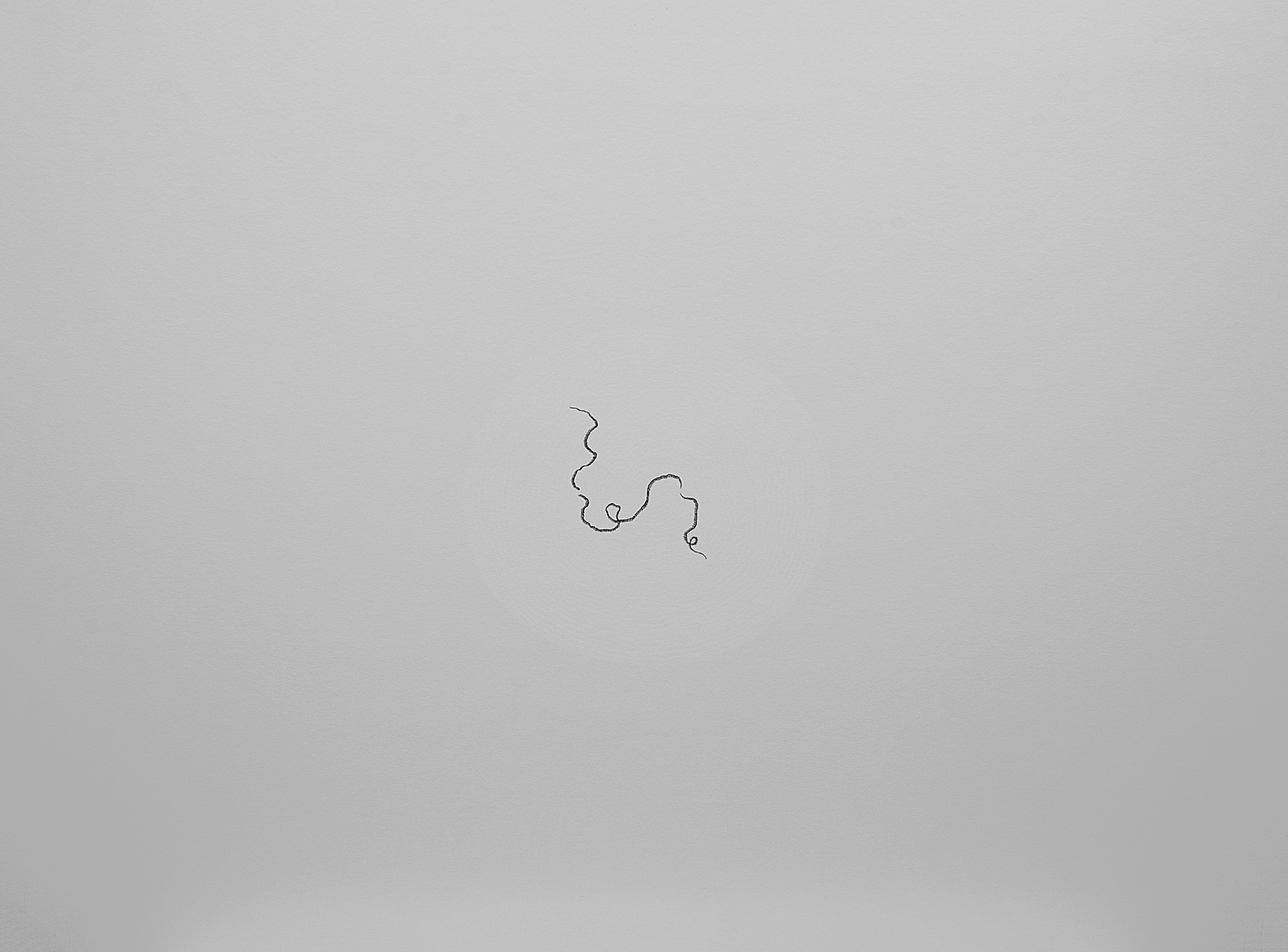
Waqas Khan
Alphabets III, 2019
Archival ink on wasli paper
19 7/10 × 29 9/10 in.
50 × 76 cm.
Inquire about this work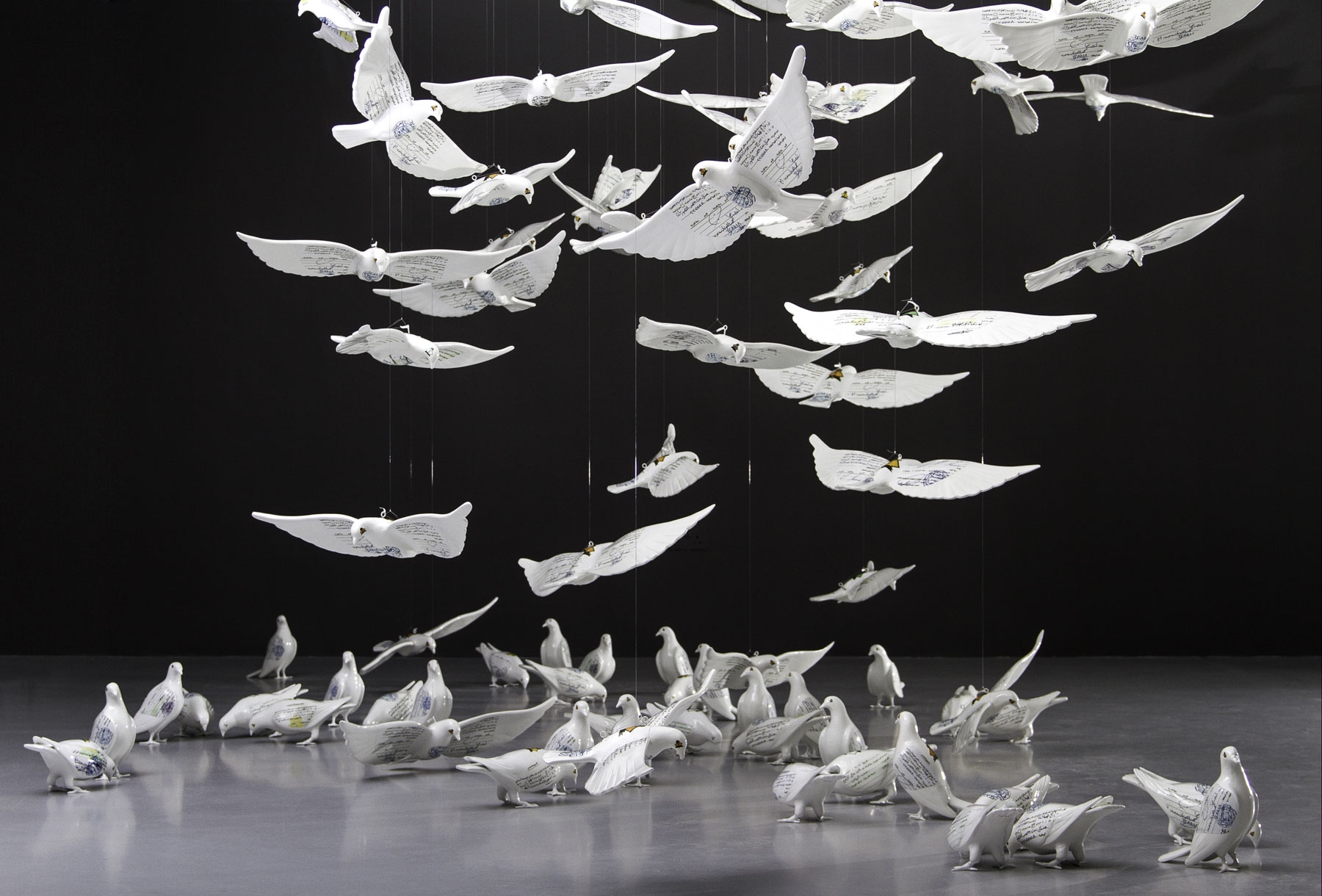
Manal AlDowayan
Manal AlDowayan is a Saudi artist, living and working in Dubai, UAE and Dahran, Saudi Arabia. Born in Dhahran, Saudi Arabia in 1973. Embracing diverse media, Manal AlDowayan’s work encompasses black and white photography, sculpture, video, sound, neon and large-scale participatory installations. Her artistic practice revolves around themes of active forgetting, archives, and collective memory, with a large focus on the state of Saudi women and their representation.
She has documented social groups like the oil men and women of Saudi Arabia in her project, If I Forget You Don’t Forget Me, and has addressed the impact of mass media on propagating intentional erasing of identities in her project Crash, highlighting the unnamed Saudi teachers dying in car crashes across Saudi Arabia. Her participatory projects have attracted hundreds of women to use art as a new platform to address social injustice like Tree of Guardians, Esmi-My Name, and Suspended Together.

Manal AlDowayan
Suspended together (Standing Dove), 2008
Printed porcelain
7 1/10 x 7 9/10 x 12 3/5 in.
18 x 20 x 32 cm.
Editions 14 of 40
Inquire about this workSuspended Together gives the impression of movement and freedom. However, a closer look the dove allows the viewer to realize that its actually frozen and suspended with no hope of flight. An even closer look shows that the dove carries on its body a permission document that allows a Saudi woman to travel. Notwithstanding their circumstances, all Saudi women are required to have this document, issued by their appointed male guardian.
The artist reached out to a large group of leading women from Saudi Arabia to donate their permission documents for inclusion in this artwork. “Suspended Together” carries the documents of award-winning scientists, educators, journalists, engineers, artists and leaders with groundbreaking achievements that gave back to their society.
The installation “Suspended Together” depicts [...] doves [...] carrying permission documents on their white porcelain bodies; these allow Saudi women to travel under the country’s male guardianship system. Eight years since the piece was made, this law has been removed. “My art is historical now!” Manal AlDowayan says, proudly.
Extracted from an interview to Manal AlDowayan by Dalia Dawood in Financial Times. 5 December, 2019.

Jong Oh
Jong Oh's artistic practice is quite particular since he does not use a studio but creates minimal sculptures in situ that respond to a given spatial situation. Responding to the nuanced configuration of each site, the artist constructs spatial structures by suspending and interconnecting a limited selection of materials: rope, chains, fishing wire, perspex, wooden and metal rods and painted threads. The elements of the work seem to float, and depending on the spatial relationship of the viewer with it these elements are connected and cross each other or appear as absolutely independent, suggesting additional dimensions to the simple three-dimensional space.
Oh appeals to the viewer to question their own perception and the way they have to relate to the space that surrounds them, offering a space for meditation and contemplation before the hustle and bustle of contemporary everyday life: a subtle and refined visual haiku about universality and the sound of space.

Jong Oh
Line Sculpture(column) #9, 2020
Metal rod, chain, fishing wire
76 3/5 × 11 4/5 × 11 4/5 in.
194.5 × 30 × 30 cm.
Inquire about this work
Jong Oh
Line Sculpture (cuboid) #26, 2018
Thread, metal rod, fishing wire, chain
43 3/10 × 27 3/5 × 15 7/10 in.
110 × 70 × 40 cm.
Inquire about this work
Mónica de Miranda
Mónica de Miranda is an artist and researcher. Born in Porto (Portugal) from Angolan parents, she actually describes herself as an artist working in the diaspora. Her work is based on themes of urban archaeology and personal geographies.
She holds a Visual Arts Degree from the Camberwell College of Arts, a Master’s Degree in Art and Education from the Institute of Education London and a PhD in Visual Art from the University of Middlesex. Mónica is also one of the founders of the artistic residences project Triangle Network in Portugal and she founded in 2014 the project Hangar Center for Artistic Research, in Lisbon.
In 2016 she was nominated for Novo Banco Photo Prize and exhibited at Museu Coleção Berado (Lisbon, Portugal) as finalist. Mónica was also nominated for Prix Pictet Photo Award in the same year.

Mónica de Miranda
Springboard, 2017
Inkjet print on fine art paper
75 × 50 cm.
Edition 5/6
Inquire about this workMónica de Miranda's photographic works focuses on the relationship between the human and the land, not in a way where the land would belong to the characters, but in the way where the characters belong to the land.
Katherine Sirois. The Land of no Menacholy. WRC Magazine, 2018.
The fragmented and fragmentary nature of Miranda’s panoramic visions – inhabited, affective and spatio-temporally situated landscapes of architecture and nature – resist the depoliticized moment when meanings get lost and a concern for agency is done away with. Meanings are always contingent and positional, ever-changing and relational, but, as far as being and becoming are concerned, they are also arenas for struggles of recognition and resistance.
Ana Balona de Oliveira.

Mónica de Miranda
Swimming pool, 2017
Inkjet print in fine art paper
27 3/5 × 41 3/10 in.
70 × 105 cm.
Edition 5/6
Inquire about this work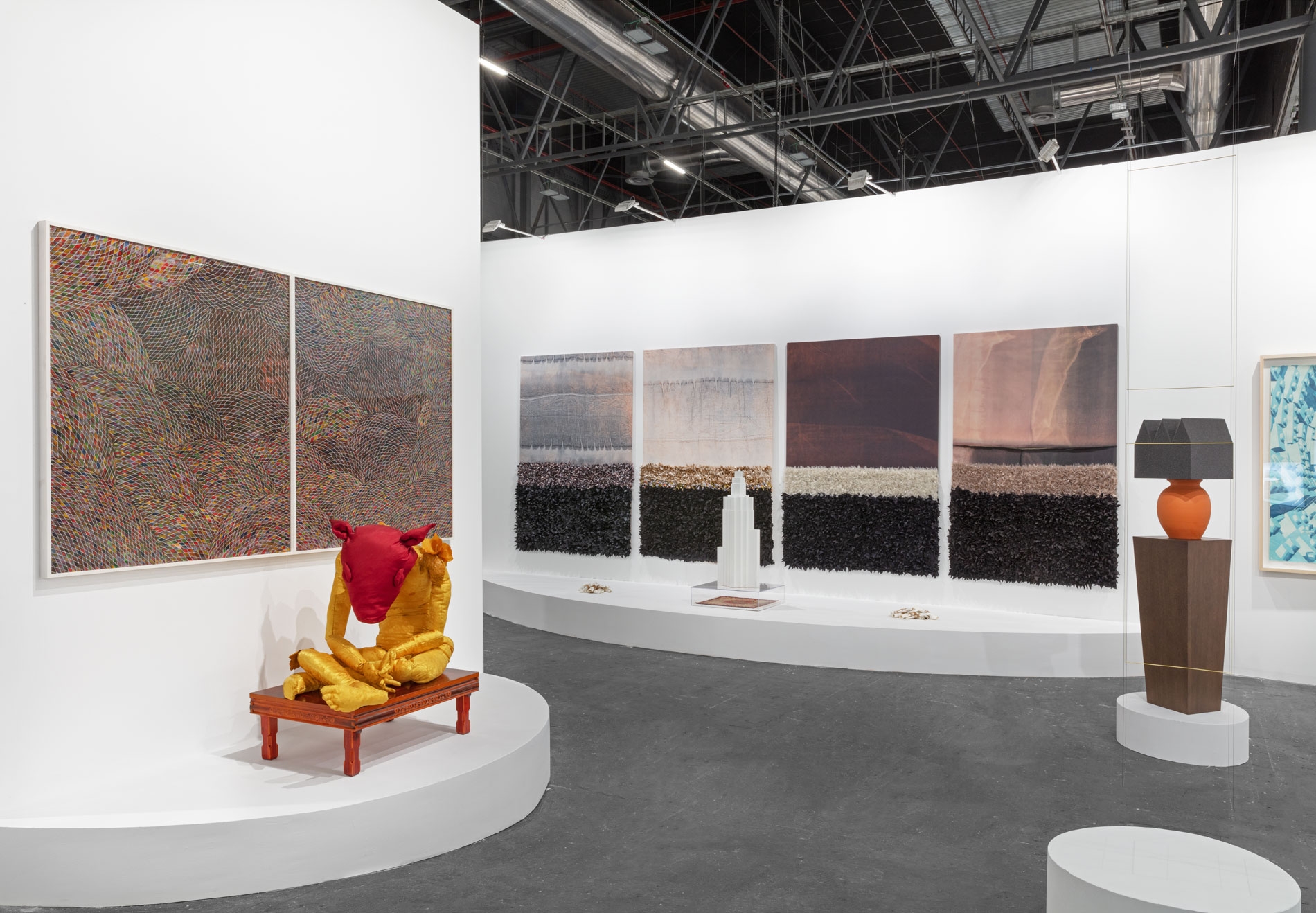
Timothy Hyunsoo Lee
Hyunsoo Lee’s works are inspired by themes of social stigma, identity, psychological disorders, and more recently, of spirituality and religion. He explores these themes through a novel vector – paintings and sculptures consisting largely of cell-like marks that vary in size, color, and saturation. His works are seen as ethereal and delicate, but the extremely labor-intensive compositions, marked by intensely obsessive repetitions, quickly betray that initial perception. Exploring his own history of anxiety disorders through his art, Timothy confronts and manipulates his tics and compulsions and channels them into his works. In responding to his anxiety with art, he has developed a novel system of mind-mapping – “a cartography of his psychopathology” – to study a part of himself that initially drew him to study developmental biology and neuroscience in college.

The Traces series began in 2014, and was the first body of work Timothy Hyunsoo Lee created when he left the laboratory to be an artist in the studio. He called these works Traces because it's a double entendre that suggests his interest in investigating a part of his identity that is both ongoing and residual. The rendering of each "cell" underlies a formal investigation of his anxiety, both as a Korean and as an individual with chronic anxiety and nightmares. Timothy’s anxious self allows him to sit down for hours, even nights, meticulously painting thousands of dots without any foresight as to how the composition will turn out - his works are dictated by visceral reactions that he gets channeling his compulsions and tics into a visual language. Thus, he traces psychopathologies through a novel method of "mind mapping" in hopes of better understanding how he thinks and views the world.

Timothy Hyunsoo Lee
Heavy Clouds, 2018
Watercolor on paper
44 1/2 × 75 3/5 in.
113 × 192 cm.
Sold
Timothy Hyunsoo Lee
Gosa (Comet boy as an offering), 2019
Korean silk, synthetic cotton stuffing, polyurethane varnish.
Variable dimensions
Inquire about this work

Gabriela Bettini
Gabriela Bettini's current interests lie in the study of the first cultural colonialisation and how it relates to its present-day legacy. Using the history of painting and the representation of landscape as her point of departure – observing how this medium has been used to reinforce the ideas that form the basis of Western hegemony – she analyses today’s environmental crisis and the extractivist model it espouses, one where women become a paradigm of the multiple violence inflicted by climate change.
In her works, she studies life experiences existing in the margins of History, revealing the voids that result when we attempt to reconcile memory, memory politics and official narratives. Gabriela Bettini explores these intermediate spaces, paying attention to the traces left behind by certain personal experiences. She is interested in the elements which seem to be symbolising that passage between realities, an interstitial condition which can be seen as a metaphor for the liminality, openness and ambiguity of those who have experienced them.
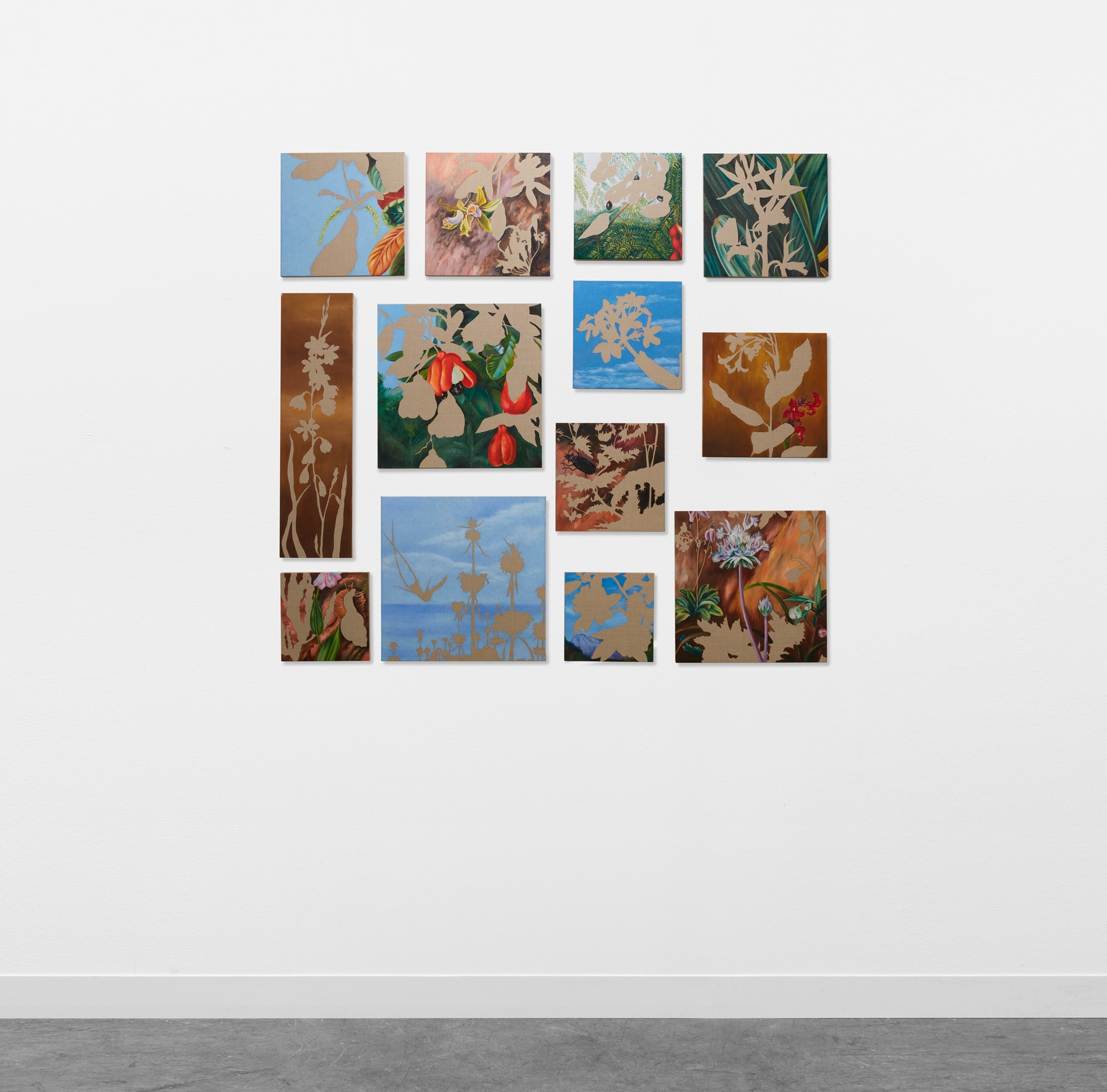
Gabriela Bettini
El Proceso- mural 1, 2020
Oil on linen
61 2/5 × 63 4/5 in.
156 × 162 cm.
Sold
Gabriela Bettini
El Proceso- mural 4, 2020
Oil on linen
31 9/10 × 46 1/2 in.
81 × 118 cm.
Inquire about this work
Joël Andrianomearisoa
Joël Andrianomearisoa’s background as an architect, Malagasy origins and profound interest in arts, define a very particular way of work, mostly playing with spaces and feelings. The emotive intelligence and sensuality of his art works made him the perfect candidate to represent his country at the Venice Biennial, win the Prize Audemars Piget or be part of public colections and museums around the World. Emotions are Andrianomearisoa’s main brush, along with the fabrics, silk papers, or any other raw materials he uses in the process. And so on, the artist creates labyrinths, landscapes, cartographies of desires or spaces also invaded by full poetry such as Inventories of the Present or Tomorrow, Tomorrow…

Joël Andrianomearisoa
Les Horizons Complexes (de l’Amour et d’une romance) III, 2018
Textile
74 4/5 × 51 1/5 in.
190 × 130 cm.
Inquire about this work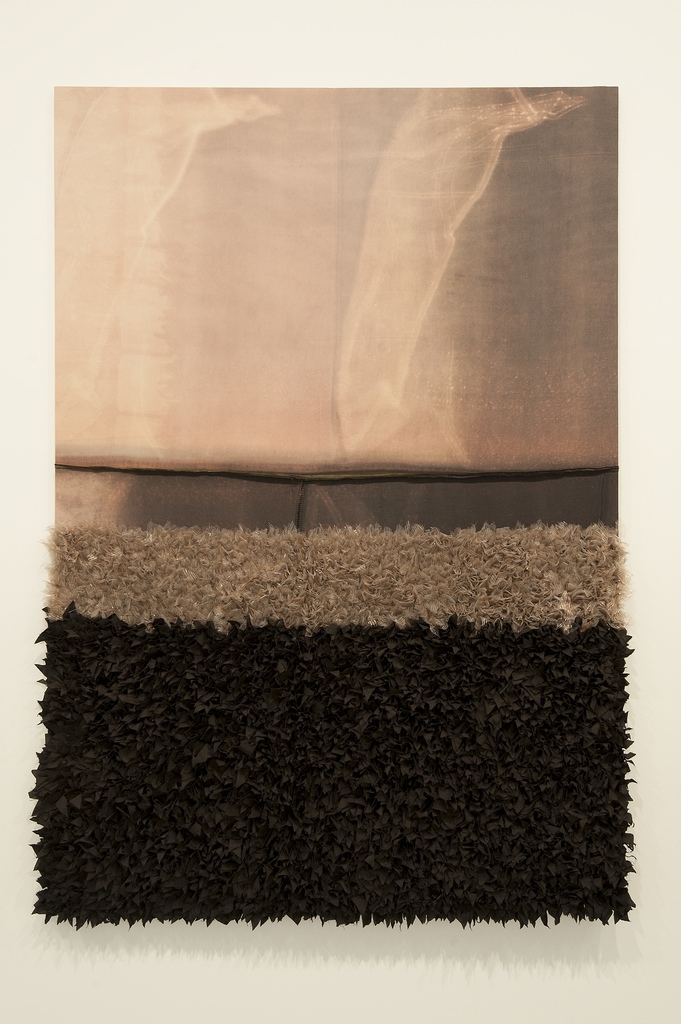
Joël Andrianomearisoa
Les Horizons Complexes (de l’Amour et d’une romance) XII, 2018
Textile
74 4/5 × 51 1/5 in.
190 × 130 cm.
Inquire about this work
Joël Andrianomearisoa
Labyrinth of the present I, 2019
Textile
19 7/10 × 15 7/10 in.
50 × 40 cm.
Andrianomearisoa places us in a space and a situation that are both unpredictable, where any effort we might make to possess the work, to endow it with meaning as an end in itself, is constantly interrupted.
Octavio Zaya. The Space in Between, 2018.
Joël Andrianomearisoa
Andrianomearisoa’s work allows us to understand that if we embrace the complexity and beauty of our gleaming shadow selves, if we have the courage to develop a relationship with all that seems unlovable within us, we may learn to relish the conversations that result from acceptance.
Neelika Jayawardane, 2016.
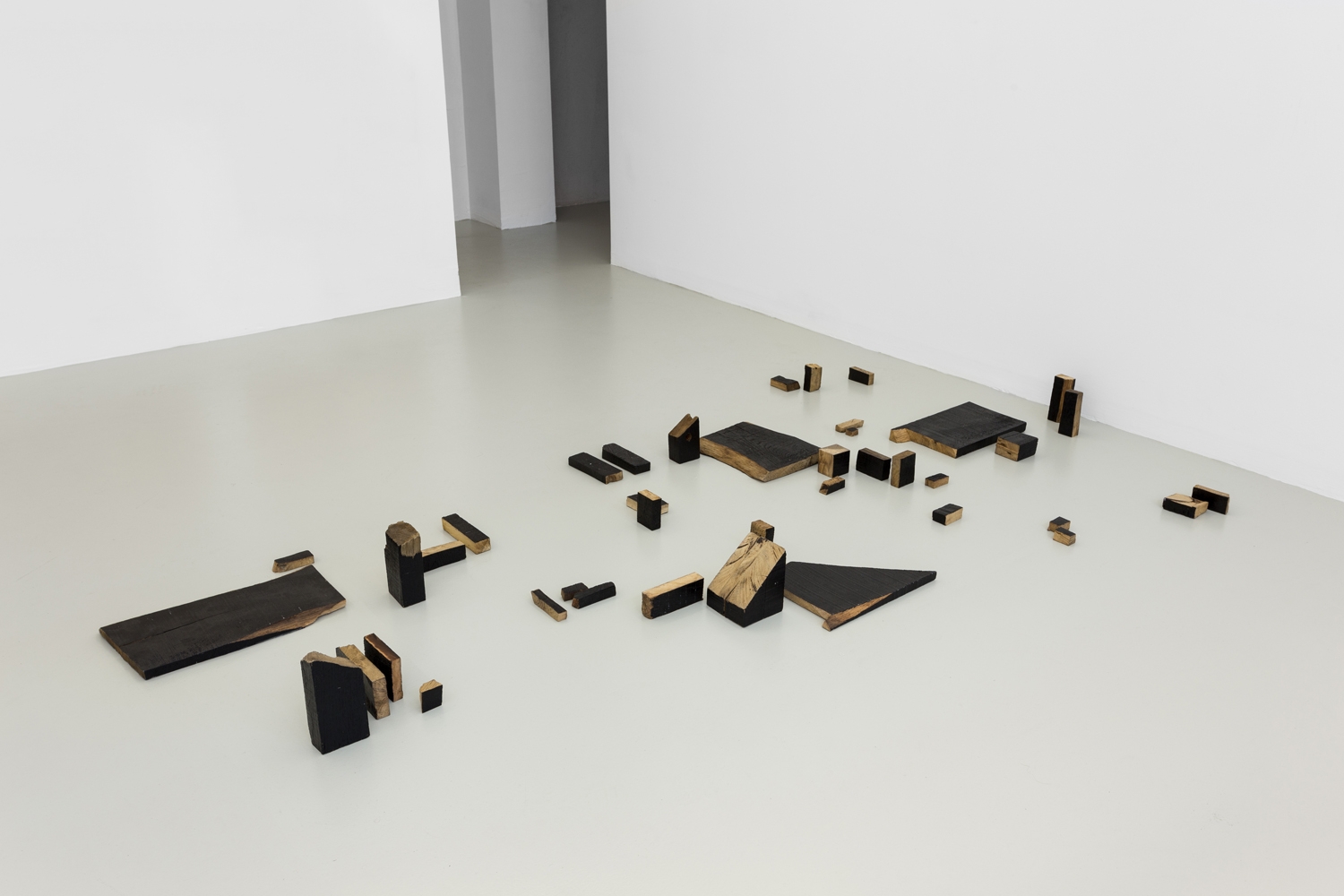
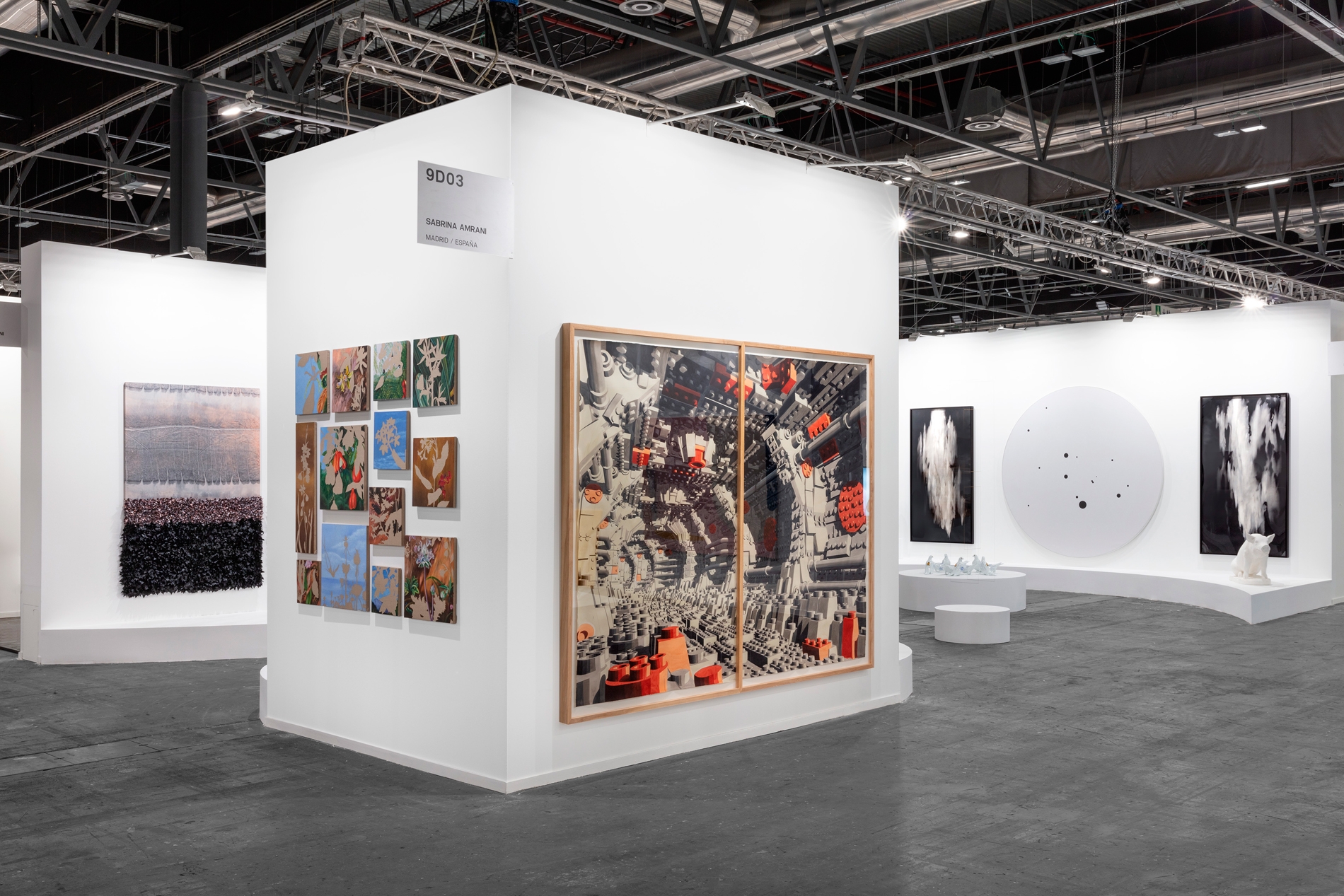
Alexandra Karakashian
Karakashian’s artworks stems from her personal and family history and reflects on current issues of exile, migration and refugee-statues. Process and materiality is key to her practice. Employing used engine oil and salt as a medium for painting, she engages in ecological discussion, the threatening instability and subtle collapse; and the unethical seizing of rapidly dwindling natural resources, particularly on the resource-rich African continent. Furthermore she investigates notions of mourning – both of an individual and collective nature – and the lamentation of the loss of land and of those who have been ‘unhomed’.

Alexandra Karakashian
Parting I, 2019
Oil on sized paper
78 7/10 × 40 9/10 in.
200 × 104 cm.
Sold
Alexandra Karakashian
Parting II, 2019
Oil on sized paper
78 7/10 × 40 9/10 in.
200 × 104 cm.
Sold
Alexandra Karakashian
Parting III, 2019
Oil on sized paper
78 7/10 × 40 9/10 in.
200 × 104 cm.
Inquire about this work
Alexandra Karakashian
Undying XLVIII, 2018
Oil on sized paper
39 × 27 3/5 in.
99 × 70 cm.
Inquire about this workHowever, the materials used by the artist (used engine oil and salt) have a meaning that goes beyond the simple contradiction between poor materials and noble materials so common in the history of painting. Their value is symbolic and deeply rooted in the current problems between North and South, such as environmental degradation, commoditisation and the essential elements for life. Both materials have been a source of conflict throughout history.
Bruno Leitão
To be unhomed is not to be homeless, nor can the ‘unhomely’ be easily accommodated in that familiar division of social life into private and public spheres
The Location of Culture, Homi K. Bhabha.

Alexandra Karakashian
Undying XL, 2018
Oil on sized paper
39 × 27 3/5 in.
99 × 70 cm.
Inquire about this work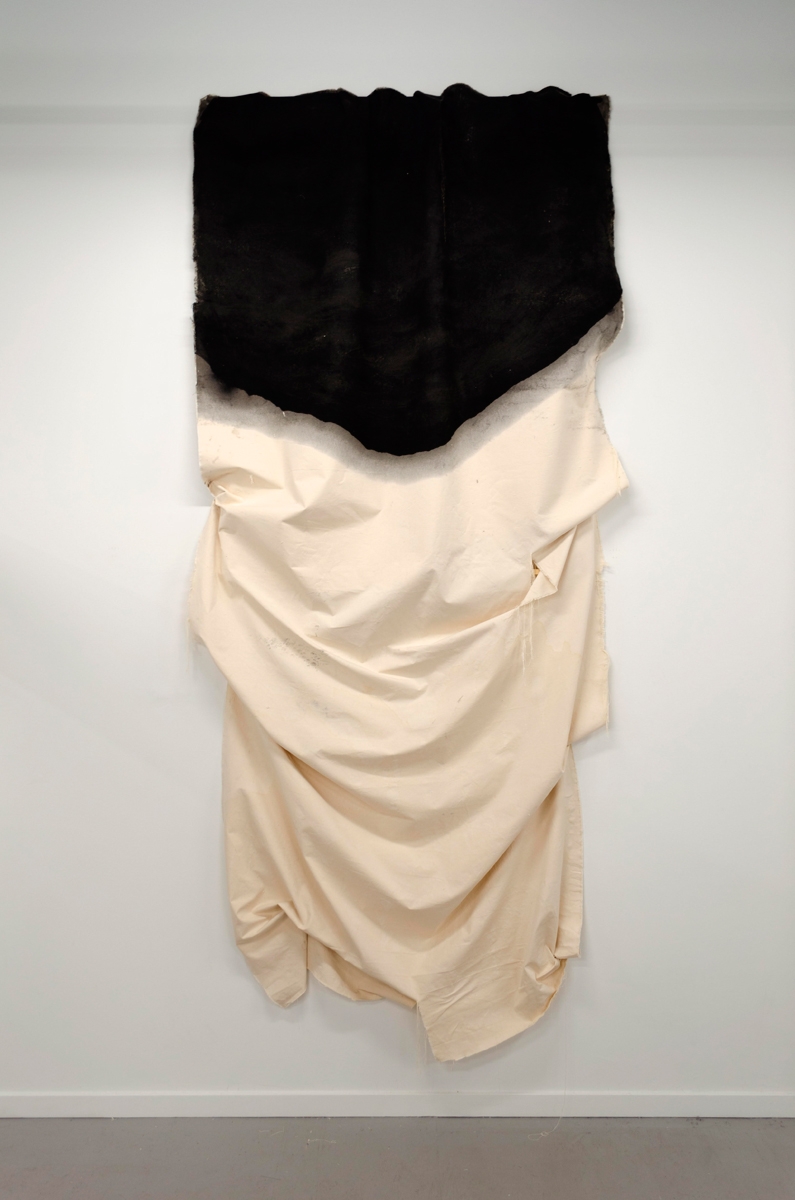
Alexandra Karakashian
Adrift (collapse), 2020
Oil and textile
118 1/10 × 70 9/10 in
300 × 180 cm
Inquire about this workPainting is a tool that has the ability to nurture an intuitive relationship between the viewer and the work. This ability is especially evident here. Karakashian’s works are a journey exploring concepts like reminiscence, exile and exodus.
Bruno Leitão. 2019.
Dagoberto Rodríguez
Dagoberto’s works have been exhibited in museums and cultural institutions around the world and are part of prominent public collections such as MOMA, Whitney Museum of American Art, Guggenheim New York, Centre Georges Pompidou, Tate Modern and Museo Centro de Arte Reina Sofía, among many others.
Combining architecture, design and sculpture, his work employs humor and irony to comment on core topics in art, politics and society. Watercolor forms a very important part of his creative process, it is a way of registering and revising his ideas. Often these works reflect a fantasy of a possible conceptual situation.

Dagoberto Rodríguez
Corredor 19, 2020
Watercolor on paper
78 7/10 × 102 2/5 in.
200 × 260 cm.
Inquire about this workThe tunnel is in itself a polyphony of meanings, a polysemy which symbolizes all the dark, anxious, painful crossings or expectations that can lead to another life. Meticulously executed, the watercolors are of a monumental scale. This medium requires letting go while striking a balance between control and freedom of the gesture. Watercolour is the medium of choice for text illustration, from Egyptian or medieval manuscripts. Immersive, these drawings catch the eye, as if you could pass to the other side of the mirror or get sucked in. They only become even more credible thanks to tenfold illusionist effects that encourage this transition to another world. Dagoberto Rodríguez creates ultra-contemporary and urban narratives of a mechanical, cold and dehumanized world bathed into an electric light … A kind of outside world, closed in itself, enigmatic, without landmarks and of which we do not know if it is dreamlike, dystopic or concrete.
Extracted from the text Trough the Tunnel. Jérôme Sans.

Dagoberto Rodríguez
Joya Roja, 2019
Watercolor on paper
51 1/5 x 51 1/5 in.
130 x 130 cm.
Inquire about this work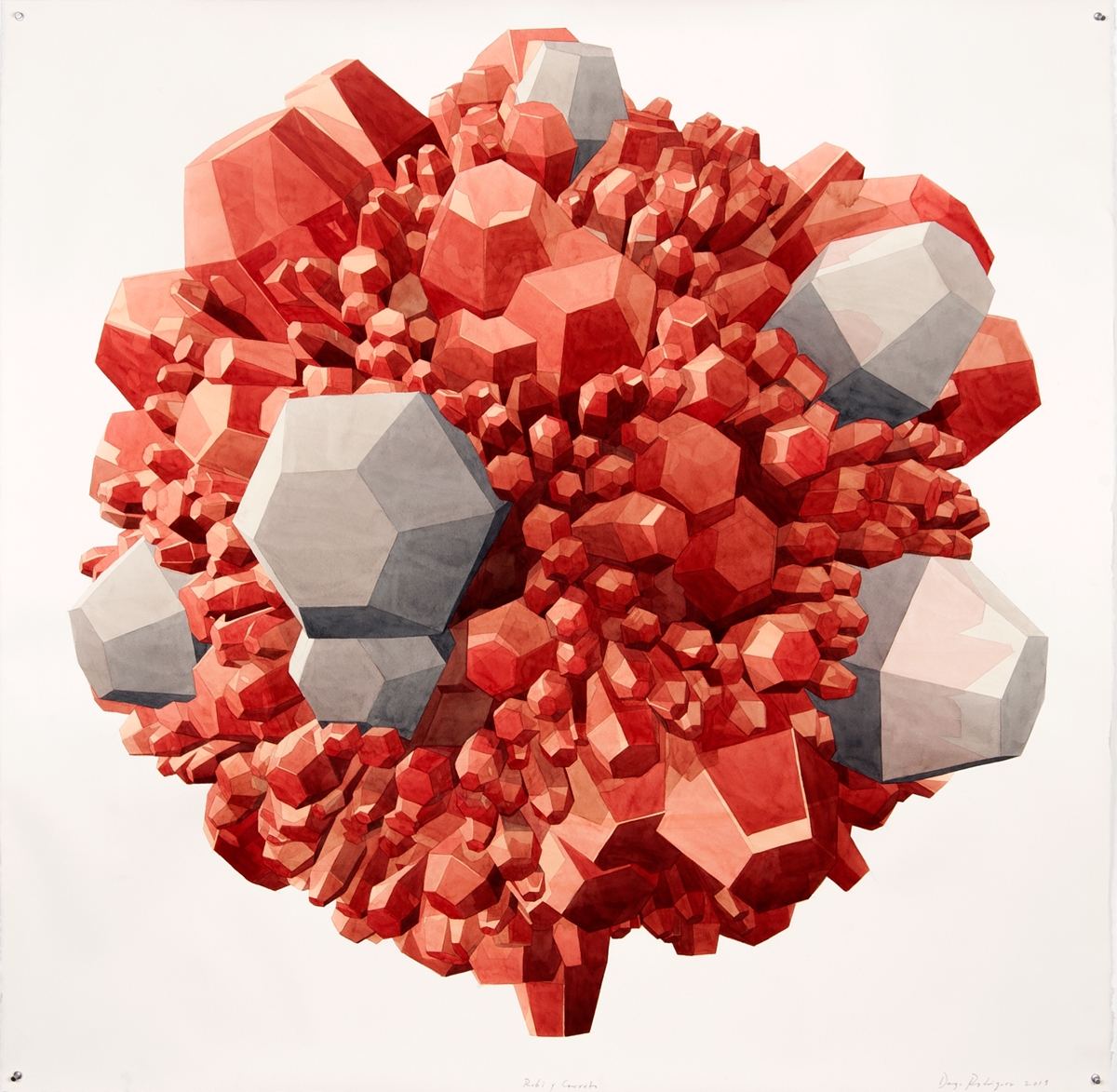
Dagoberto Rodríguez
Rubi y Concreto, 2019
Watercolor on paper
51 1/5 × 51 1/5 in.
130 × 130 cm.
Inquire about this workEach time that I produce a watercolor in the studio, I am trying to introduce an idea. A watercolor is an invitation to collaborate. Not just that, but it is the foundation to start building a new idea. The first seed of a tree which later grows. They are also a thematic archive. (...) Fabricating things yourself is an extremely powerful narrative tool. Not just that, but it is a lesson of survival. It is as if you find yourself on an island and you need to develop a new language or system of signs for yourself, that is a vision that has stayed with me.
Dagoberto Rodríguez, 2019.

Dagoberto Rodríguez
No Estrella Dorada, 2019
Watercolor on paper
51 1/5 × 51 1/5 in.
130 × 130 cm.

Dagoberto Rodríguez
No Estrella Gris, 2019
Watercolor on paper
51 1/5 × 51 1/5 in.
130 × 130 cm.
Inquire about this work